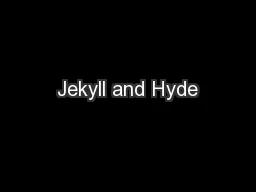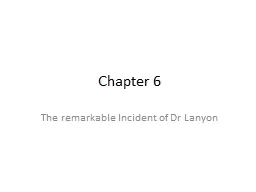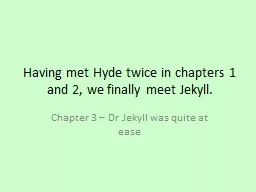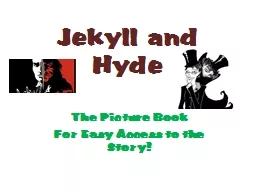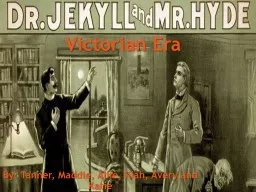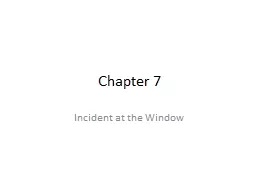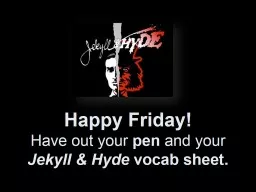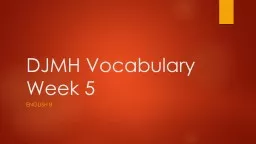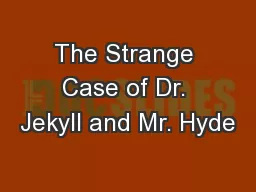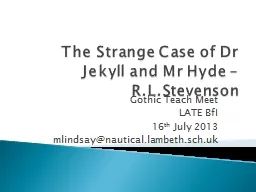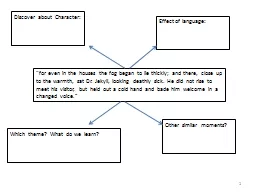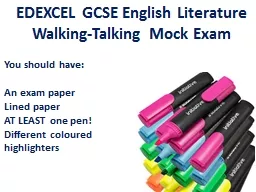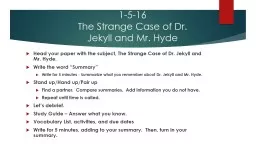PPT-Jekyll and Hyde
Author : mitsue-stanley | Published Date : 2018-01-21
What do these words mean to you LO To be introduced to the new unit of work Research Lesson Next term we will be studying The Strange Case of Dr Jekyll and Mr Hyde
Presentation Embed Code
Download Presentation
Download Presentation The PPT/PDF document "Jekyll and Hyde" is the property of its rightful owner. Permission is granted to download and print the materials on this website for personal, non-commercial use only, and to display it on your personal computer provided you do not modify the materials and that you retain all copyright notices contained in the materials. By downloading content from our website, you accept the terms of this agreement.
Jekyll and Hyde: Transcript
Download Rules Of Document
"Jekyll and Hyde"The content belongs to its owner. You may download and print it for personal use, without modification, and keep all copyright notices. By downloading, you agree to these terms.
Related Documents

